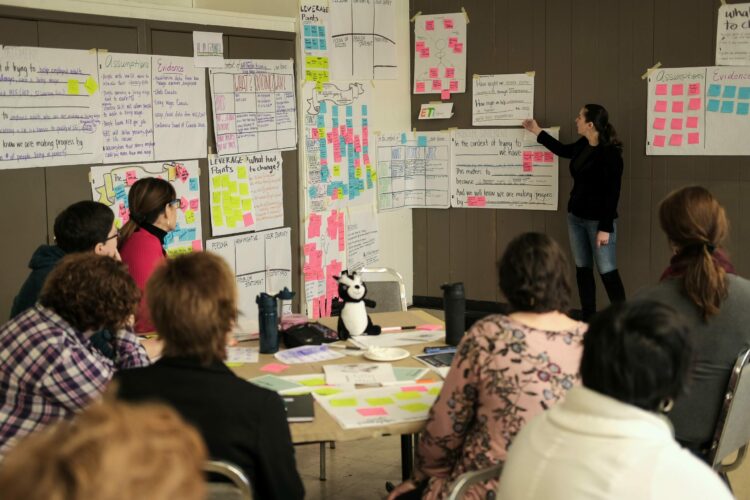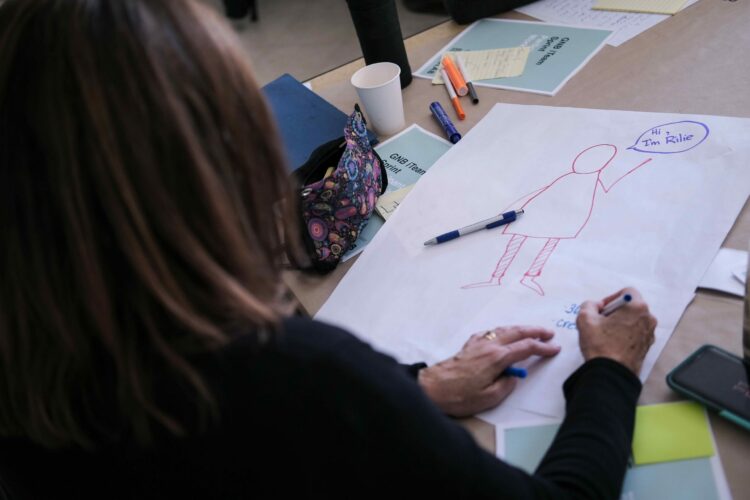Public Sector Innovation Labs & the Designer’s Role in the Future
Josephine Chan moved to the Netherlands from Canada after having discovered a passion for design and innovation during her work experience in public sector innovation. In her first semester of MSc in Strategic Product Design at IDE, she wrote a paper for the course Concept & Conceptualization (C&C) joining the track edited by the PCM Lab. Josephine wanted to dive deeper into her experience working on a newly established Innovation Team at a provincial government in Canada, composed of recently graduated people whose mission was to highlight and support innovative and design approaches to addressing public issues. In her C&C paper, ‘Public sector innovation lab at the Government of New Brunswick: organizational culture & role of designer’, she explored in particular the practical challenges of their work and reflected on their role as designers. In this post are described some of the main insights from her research.
Diving deeper into a public innovation experience
After her bachelor’s in neuroscience and a master’s in development practice, the experience on the Innovation Team really catapulted Josephine’s interest in – what she didn’t know at the time was – design. During her time at this position, the team discussed their work in relation to innovation more than design, and although she knew she liked the work, Josephine didn’t know exactly how to articulate it. Now in her second semester as an IDE student, she has continued connecting, comparing, and contrasting her work in the Innovation Team with what she has been studying in her courses. Writing the C&C paper with the Lab became a chance for her to reflect more in depth on design literature addressing co-design and the role of the designer, and to think about these topics in relation to her work experience.
In her paper, Josephine explored the questions: What are some of the practical challenges of being an internal team tasked with disseminating an innovative and design mindset within the government? What is the difference between facilitating and designing?
Insights about Public Sector Labs
Drawing from first-hand experience working on the Innovation Team, Josephine decided to examine specific aspects of their work and linking them to literature regarding public sector innovation labs, organizational culture change, and diffuse design and expert design. In particular, she identified two projects of the Innovation Team (their monthly Innovation 101 Workshop and a design sprint) and categorized the role of the designer and design practices in each. Out of her research, Josephine gathered several insights regarding expert and diffuse designers and challenges in organizational culture change.
Challenges in Organizational Change
The Innovation Team was an internal team within a big organization. There is a tension when considering how to approach the other parts of the organization – both in the way that you work, and communicating the value and purpose of the work. Within the Innovation team itself, there was constant tension between the focus on process and outcome; the desire to work in a self-organizing, limited hierarchical manner and accountability; demonstrating value and productivity that varied from what is entrenched in the traditional definition of productivity within the government.
While working within an organization, it is important to be conscious of the language used to communicate with non-designers, these are people who are not familiar with the design process. The design process can be quite personal and non-linear, but when communicating with others, Josephine believes it is important to describe the approach one is using, in order to make it accessible. This is important especially if the aim is to have other employees adopt design methods and approaches as a way of working within an organization. In addition to just talking about it, doing more can demonstrate the design process to people who do not understand it; to have something tangible that can be worked with and improved upon. In turn, this can help build credibility while communicating the purpose and advantages of this work.
Facilitating and Designing
In the paper, she also discusses diffuse and expert design in relation to the Innovation Team as they guided other government employees through a design sprint. Diffuse design is the idea that everyone has the ability to adopt a design approach while expert design refers to professional designers who have specific design skills [1]. After reading from literature about diffuse design and the role of the designer in social problems, Josephine has thought more critically about her experience as a facilitator and designer.
[1] Manzini, E. (2016). Design Culture and Dialogic Design. Design Issues, 32(1), 52–59. https://doi.org/10.1162/desi_a_00364

During her experience on the Innovation Team, she was taught through a metaphor of making salad, that facilitators are akin to the bowl, the equipment to toss the salad, and the people they facilitate bring the ingredients, the actual content. Through her literature research, she has gathered that the designer’s sense of the word ‘facilitator’ requires more involvement than a typical facilitator in the strict sense of the word (i.e. the designer contributes more than just their knowledge of a design method or process, but their ideas). In actualization, the role of the facilitator for a team of non-expert designers, requires a great deal of attention, for example during the design sprint where Josephine taught different design methods to others, such as building personas and journey maps versus the role of applying these methods and actively designing on the team. It is important, she learned/thinks/figured to be clear and intentional about the purpose of your role by thinking about questions such as: are you there to influence the design outcome? Is it to create a space that brings out creativity and design abilities of people who haven’t designed before?

Musings on facilitators & designers in the future
Since writing her C&C paper, Josephine has developed a new perspective on the role of designers. She speculates that although one may be trained as a designer, this may not automatically translate to being a good facilitator or a good collaborator (and vice versa). Oftentimes in literature, she has noticed that as authors talk about design as moving away from product design to applying design to solving more abstract problems, they also redefine the role of the designer as a facilitator. Upon reflection, Josephine speculates that this might come from the idea that designers are able to synthesize different criteria to create something, a product that will enable the user to achieve something. Similarly, she thinks, this facilitator is the new and updated version of a designer who can bring together different perspectives to create a shared understanding and a solution that might exist more abstractly (as opposed to a product).
Josephine believes that there is more nuance to the term than just a blanket statement for a designer working in a complex context. This could be that designers will have to develop their skills outside of traditional design, but to learn to work with all different types of people on their teams, especially as design moves into the arena of co-creation. Design work might need to consider the messiness of co-creation, diffuse design, and living within organizations, such as a Public Sector Innovation Lab within government. This means thinking about how your role as a designer fits into something bigger. In the future, Josephine thinks, participatory design and co-design will become more prevalent as individuals and organizations acknowledge the complexity of problems and the need to collaborate. Therefore, designers will need to be able to articulate their skills while being open to diffuse design and what co-creation and a designer’s role actually means.